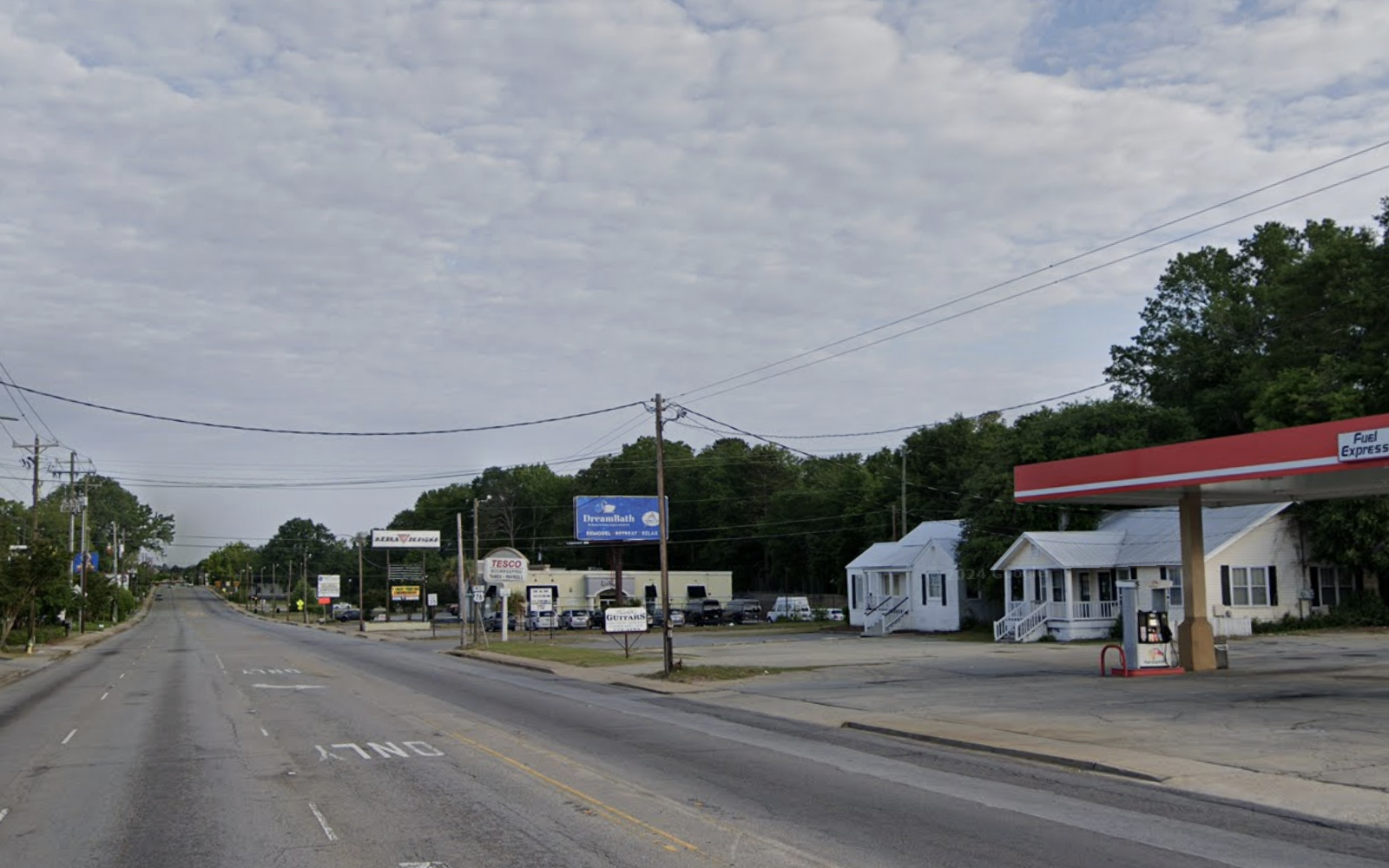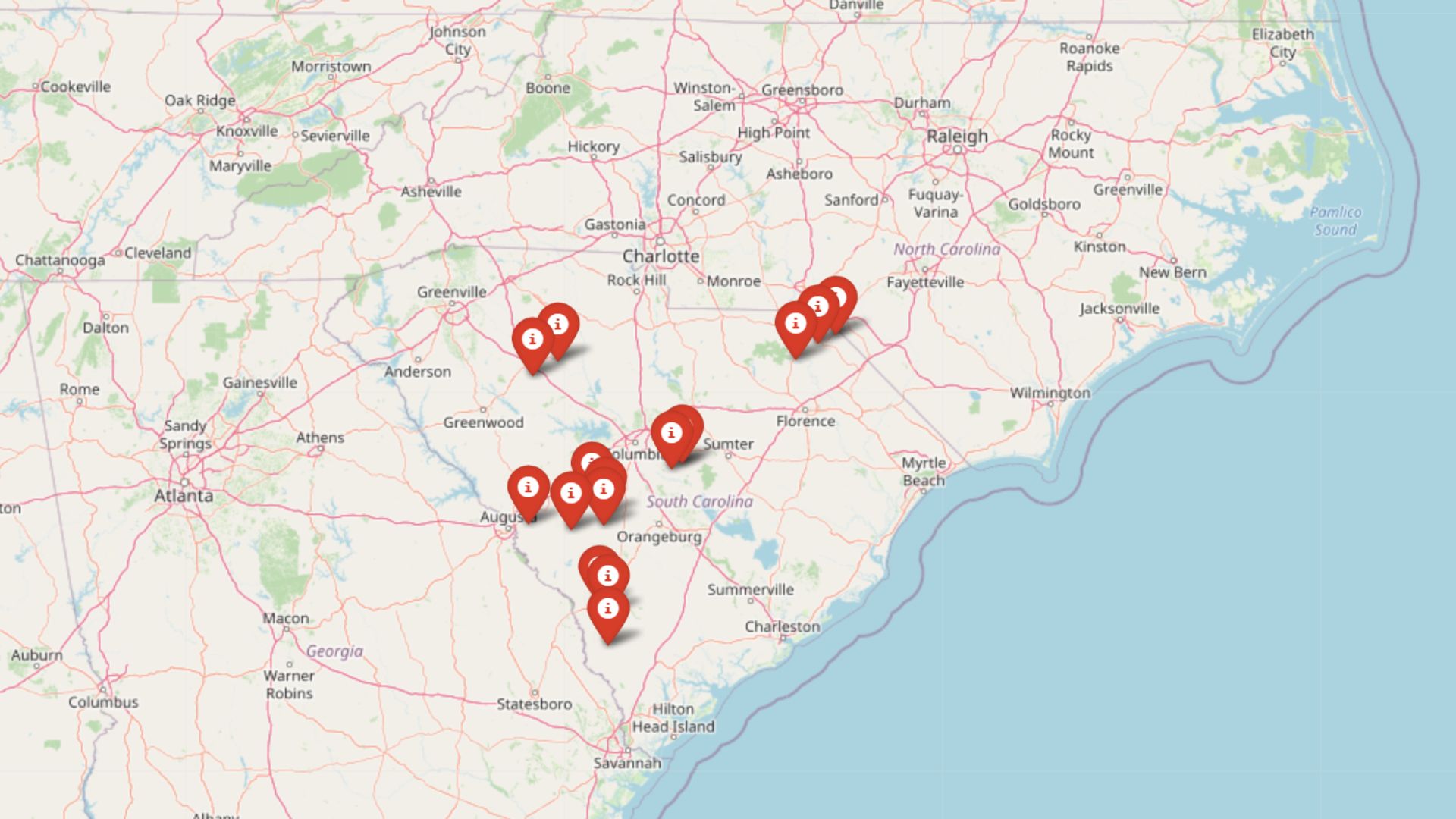
Southern South Carolina’s Lowcountry is full of places where the pace of life bends toward the land and water rather than the clock. Here, tidal creeks slip between salt marshes, pinewoods shelter crossroads no highway sign announces, and Spanish moss hangs heavy enough to muffle the sound of passing cars. It is a landscape of small towns and unincorporated hamlets where quiet feels less like absence and more like inheritance.
These communities—some with only a handful of streets, others anchored by an old church or a shuttered depot—show how seclusion can take root in many forms. A rail spur gone silent, a bridge leading only to oyster beds, or a dirt road that simply runs out into the pines—each has left its mark, holding a town apart from the press of modern growth.
Life in these corners of Hampton, Jasper, Beaufort, Allendale, and Colleton counties is tied to the rhythms of farming, timber, and water. The hush of fields at dusk, the slow cadence of blackwater rivers, and the persistence of longleaf pine forests keep these places tethered to the Lowcountry’s older story.
What follows is a journey through twenty-five of these tucked-away towns—places where stillness lingers, history is often etched in brick and weathered wood, and the landscape itself insists on setting the pace.
25. Estill: Quiet Woods and Gentle Fields
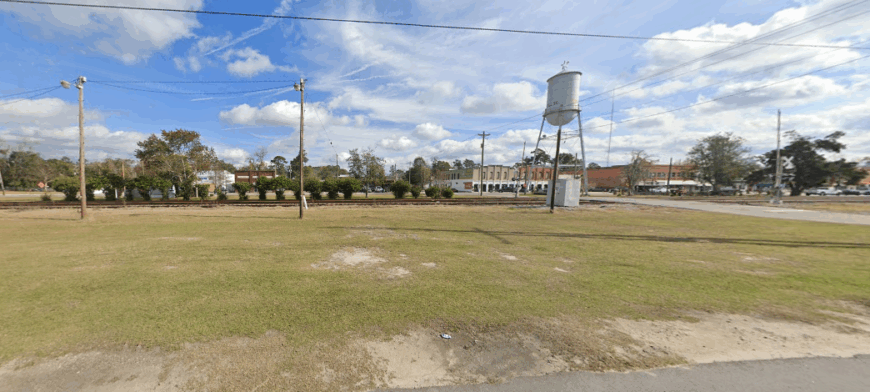
Down in Hampton County’s piney lowlands, Estill rests beneath swaying Spanish moss where quiet stretches of highway feel more like forgotten lanes than modern routes. Though not far from Savannah or Hilton Head by the map, its buffer of forests, fields, and railroad history keeps it feeling tucked firmly away.
Brick storefronts and wide porches downtown hold a faded charm, especially as summer heat hangs slow and sweet in the air. Visitors come to fish at nearby Lake Warren, stroll under longleaf pines, and sample local barbecue during small-town festivals.
Agriculture and timber remain the steady heartbeat of daily life here. It’s the kind of place where time stretches just enough to let you breathe a little deeper.
Where is Estill?
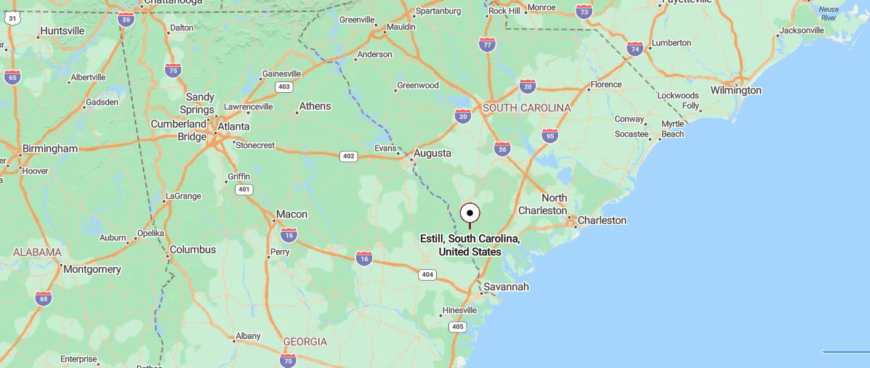
Estill sits in southwestern Hampton County, South Carolina, where US-321 and SC-3 meet in a quiet stretch of lowcountry. It’s roughly 52 miles north of Savannah and about 64 miles northwest of Hilton Head, far removed from any urban bustle.
Reaching it means following long, two-lane roads through pine woods and farm fields until the town slowly comes into view. Once there, the hush and weathered brick make it feel like time has settled in and decided to stay.
24. Yemassee: Still Waters and Historic Quiet
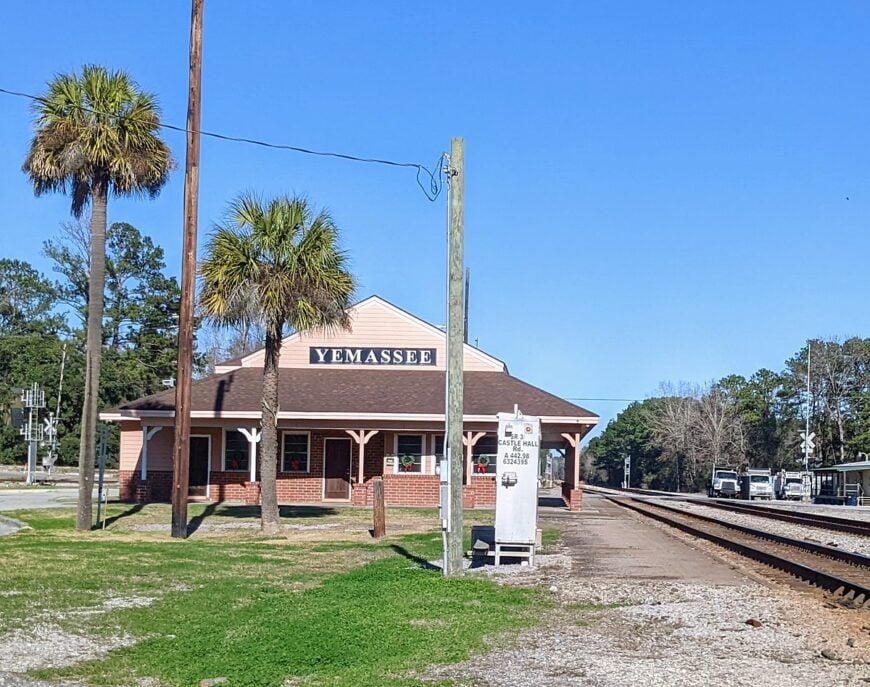
Hidden where Beaufort and Hampton counties meet, Yemassee feels tucked in between Lowcountry swamp and pinewood sandhill as if designed to be easily overlooked. Set far from bustling tourist routes yet close enough to hear rumors of coastal life, the town is wrapped in marshland, moss-draped oaks, and long, quiet stretches of rural road.
Its center holds weathered churches, old depots, and mom-and-pop diners that speak softly of a railroad past still etched into the soil. Travelers arrive to kayak the Combahee River, visit the historic Civil War-era Frampton Plantation House, or search for wildlife along nearby ACE Basin trails.
Local life blends agriculture, forestry, and tourism in a way that keeps things steady without ever feeling hurried. It’s the kind of place where stillness settles in like a companion rather than a visitor.
Where is Yemassee?
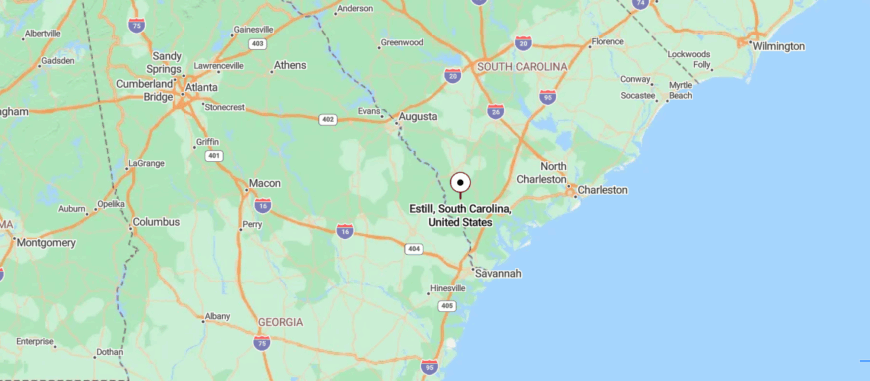
Yemassee lies in South Carolina’s Lowcountry, straddling Hampton and Beaufort counties along the CSX rail line. It’s about 50 miles northeast of Savannah and 65 miles west of Charleston, neatly tucked between the two coastal cities.
You reach it by leaving I-95 or US-17 and easing onto backroads edged by moss-draped oaks and old fields. When you arrive, the quiet grace of the town makes it feel like a pause between past and present.
23. Early Branch: Marsh-Fringed Retreat
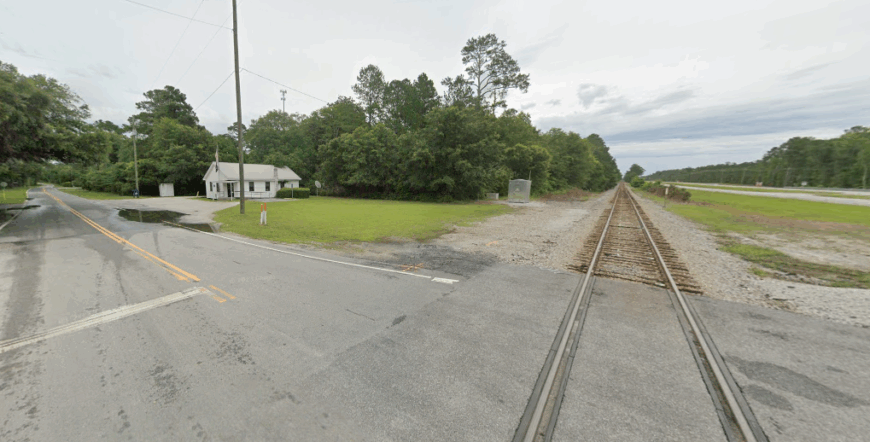
Tucked among the pine forests and quiet farmland of Hampton County, Early Branch sits far from major highways and even farther from any sense of rush. Its handful of crossroads, old homes, and modest churches make the town feel more like a pause in the landscape than a destination on it.
Surrounded by wetlands and long tracts of timber, it holds a hush that seems woven into the air itself. Travelers occasionally pass through to scout hunting land, fish hidden ponds, or explore nearby ACE Basin wildlife areas.
Farming and logging remain steady anchors of the local economy, keeping life practical and unpretentious. It’s the kind of place where the silence feels intentional — and deeply rooted.
Where is Early Branch?
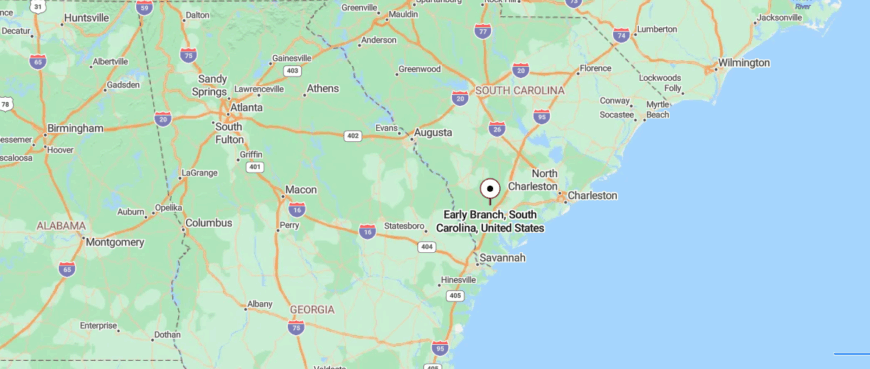
Early Branch is an unincorporated community nestled in Hampton County, South Carolina, strung along SC-68 about 14 miles southeast of the county seat of Hampton. It feels pleasantly off the beaten path, tucked into lowcountry terrain far from major urban centers.
The drive there winds along thinner two-lane roads that cut through woodlands and farm plots before dropping you into the quiet heart of the community. By the time you arrive, the hush and simple landscape make it feel like time has settled down just to take a breath.
22. Seabrook: Marshland Quiet and Tidal Air

Set along tidal creeks in Beaufort County, Seabrook is a community where water shapes both the land and the rhythm of daily life. Broad marshes stretch out like mirrors at low tide, and the salt air drifts through oak-lined lanes where the pace slows to match the ebb and flow.
The town’s history ties to fishing and farming, with remnants of old family land still visible in weathered barns and dock pilings. Visitors arrive to launch boats into Whale Branch, cast lines for redfish, or wander shaded backroads that meander past moss-draped homesteads.
Generations keep life grounded in agriculture, local waters, and quiet traditions. Seabrook holds a sense of solitude that feels stitched into the landscape rather than imposed upon it.
Where is Seabrook?
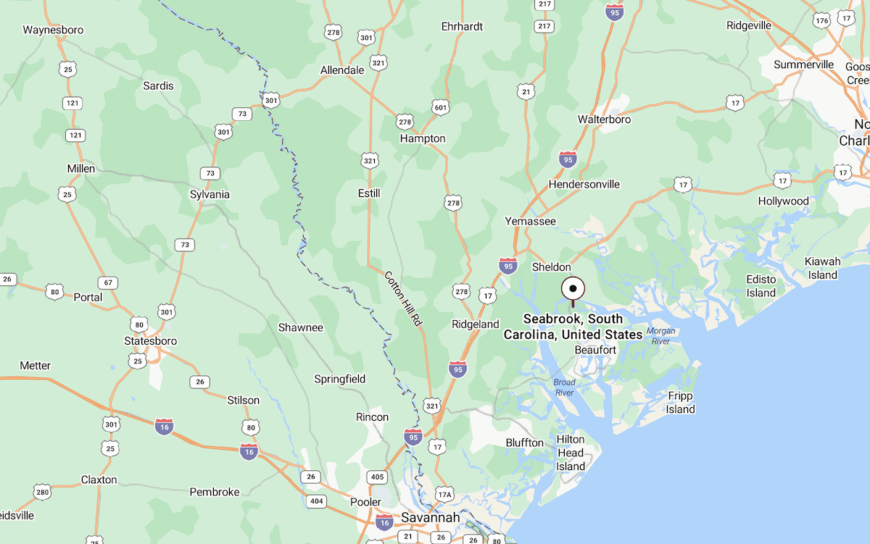
Seabrook lies in northern Beaufort County, South Carolina, perched on Whale Branch Creek just west of Lady’s Island. It’s about 7 miles north of Beaufort, yet its surrounding marshes and winding rural roads give it a distinctly secluded character.
The drive takes you across quiet bridges and through stretches of tidal flatland until the scattered homes and boat landings appear. By the time you arrive, the call of marsh birds and the hush of open water make it clear you’ve stepped into a quieter corner of the Lowcountry.
21. Tillman: Quiet Country Crossroads
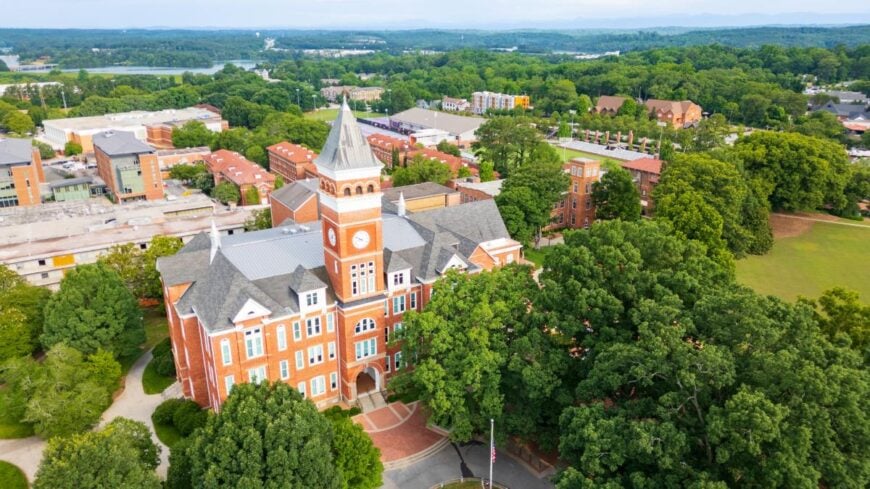
Hidden along quiet two-lane roads in Jasper County, Tillman rests among soy fields, pine groves, and long-abandoned rail spurs that once tied it to a busier world. Its isolation comes not from great distance but from how little has changed — old clapboard houses and country churches stand against a backdrop of deep-rooted stillness.
On most days the loudest sounds are wind through the crops, frogs calling from nearby wetlands, or a pickup rumbling down a dusty road. Travelers occasionally arrive to hunt, fish, or photograph wildlife in surrounding ACE Basin habitats, before drifting just as quietly back out.
Farming and timber work remain the backbone of daily life here, passed down through generations. It’s the kind of place where the past feels present — and peace seems part of the land.
Where is Tillman?
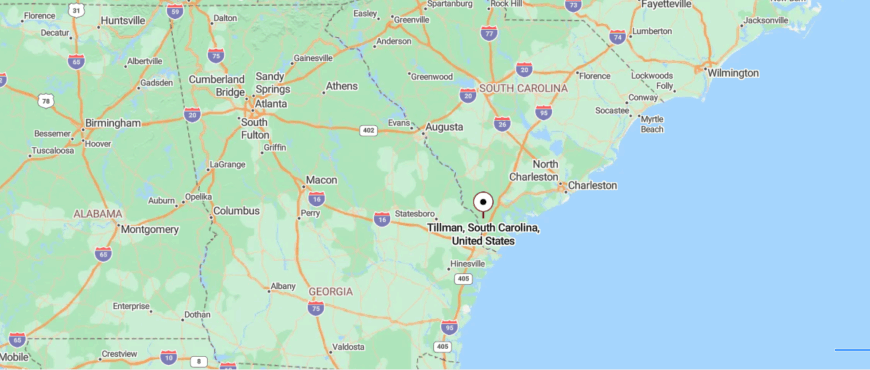
Tillman sits in rural Jasper County, South Carolina, where US-321 meets SC-336 amid stretches of flat lowcountry farmland. It’s about 7 miles west of Ridgeland and far from any major urban center.
Travelers reach it by following quiet two-lane roads through fields and pinewoods until the crossroads slowly comes into view. By the time you arrive, the stillness and historic red-brick Tillman School make it feel gently preserved in its own quiet corner of time.
20. Allendale (outskirts): Forests Beyond the Main Street
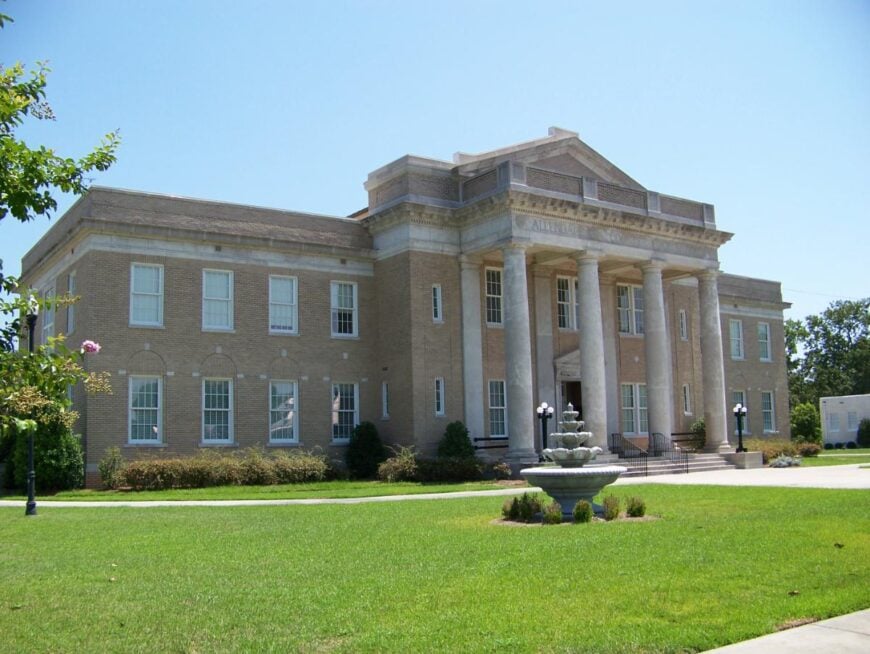
Tucked into South Carolina’s western Lowcountry, Allendale feels far from the hurried interstates, settled instead along quiet stretches of U.S. Route 301 where traffic once thrived and now trickles. Surrounded by pinewoods, farm fields, and stretches of Black Swamp wetlands, the town holds a sense of isolation born more from time than distance.
Downtown storefronts and mid-century motels hint at a bygone heyday, now softened by weather and memory. Visitors explore nearby trails at Lake Warren State Park, tour historic plantation homes, or stop in for soul food on their way to the Savannah River.
Agriculture, education, and a growing arts presence anchor day-to-day life for locals. It’s the kind of place where the quiet feels thick — as though even the air remembers what once was.
Where is Allendale?

Allendale lies in South Carolina’s lowcountry Coastal Plain, serving as the seat of Allendale County along U.S. 301. It’s about 85 miles southwest of Columbia and far from major urban hubs, wrapped in quiet farmland and pine woods.
Reaching it means following two-lane roads until storefronts and historic churches slowly rise into view. When you arrive, the calm streets and old architecture make it feel quietly rooted in another time.
19. Ritter: Pines and Rural Solitude
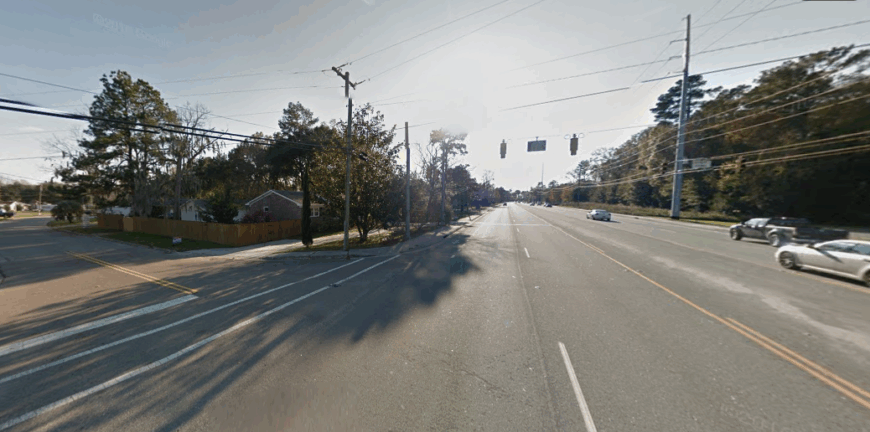
Deep in Colleton County’s backcountry, Ritter sits along narrow sand roads where thick forest and swampy lowlands seem to close in from all sides. With no bustling highway nearby and only scattered homes and churchyards to mark its center, the town feels almost hidden by design.
What remains of its turpentine and timber past lingers in old structures weathered by heat, storms, and time. Outdoorsmen drift through to hunt in the ACE Basin, paddle salt marshes, or follow unpaved roads beneath moss-draped oaks.
A mix of forestry work, farming, and generational family land keep life quietly rooted. It’s the kind of place where solitude isn’t searched for — it simply surrounds you.
Where is Ritter?
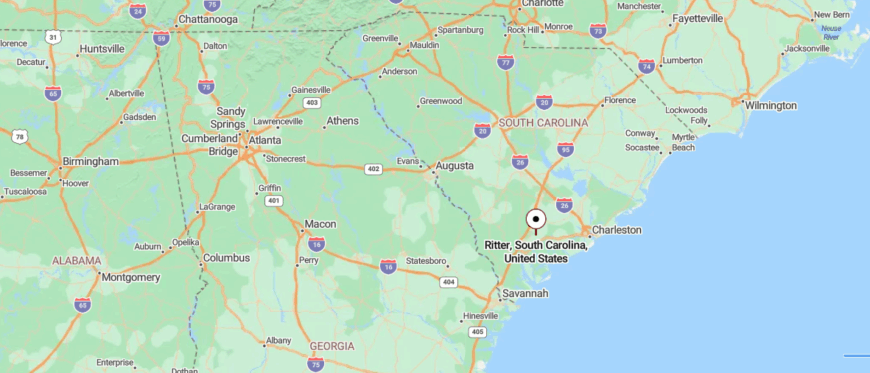
Ritter is a small rural community in Colleton County, South Carolina, quietly rooted near sea level amid the lowcountry landscape. It lies about 7 miles south of Walterboro, positioned between Yemassee and Cottageville along shaded secondary roads.
You reach it by following older backroads—once part of historic SC-32—where forests and fields ease open just enough to reveal the crossroads and nearby Beech Hill Plantation grounds. By the time you arrive, the calm lineage of land and history feels deeply held, as though the echoes of past maps and quiet lives still linger in the haze of pines.
18. Cummings: Farmland Wrapped in Stillness
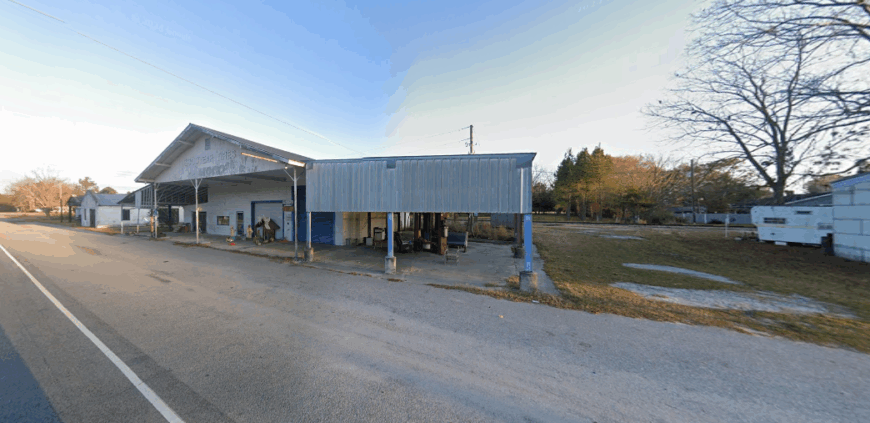
Tucked down a winding road in Hampton County, Cummings feels less like a town and more like a whispered clearing in the woods. Dense pine forests and sprawling farm fields keep it buffered from busier routes, giving it a hush that hangs in the humid Lowcountry air.
A handful of homes, a country church, and remnants of rail-era life hint at a past that once pulsed stronger through this rural outpost. Travelers occasionally arrive to hunt deer and turkey, explore nearby ACE Basin backroads, or fish blackwater creeks that twist through the swamps.
Farming and timber work remain the steady anchors of local life, passed down across generations. It’s the kind of place where the silence settles into your bones — and stays.
Where is Cummings?
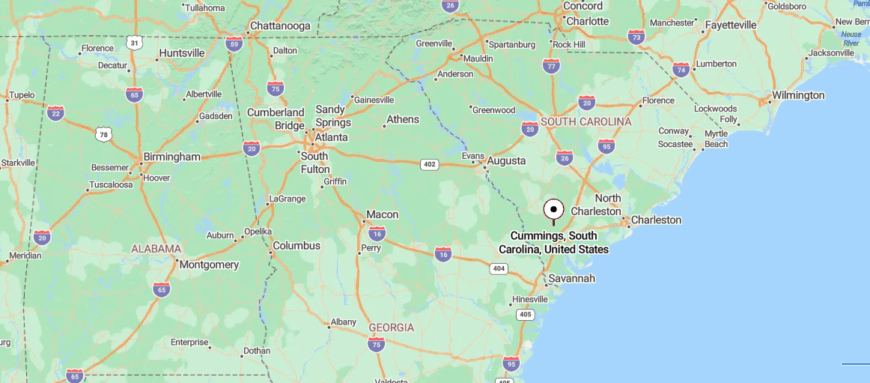
Cummings is a small hamlet in Hampton County, South Carolina, nestled amid the rural lowcountry roughly 10 miles southeast of Hampton and near communities like Varnville and Yemassee. It lies about 32°47′ north latitude and 80°59′ west longitude, at an elevation of around 72 feet, set within gently rolling farmland.
To get there, you ease off the main roads onto quiet back lanes that weave through shaded fields and scattered homes before arriving at its soft crossroads. When arrival comes, the gentle hush of the landscape makes it feel like a place that time has chosen to linger in quietly.
17. Robertville: Historic Silence in the Pines
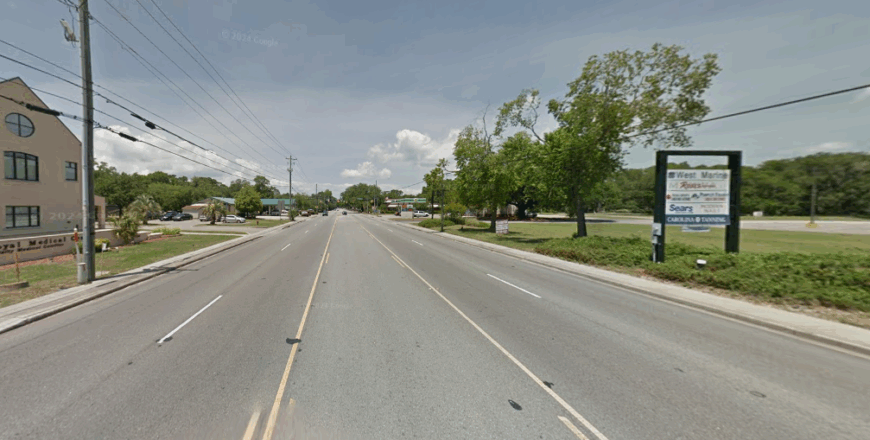
Down a quiet stretch of Highway 321 in rural Jasper County, Robertville sits wrapped in fields, pinewoods, and stories older than many towns on the map. Distance here is measured not by miles but by the way time seems to move differently beneath the hanging moss and hush of old churchyards.
Just a few historic buildings, house sites, and cemetery stones remain as sentinels of its plantation-era and Civil War past. Travelers wander through to visit nearby historic ruins, birdwatch in the Savannah National Wildlife Refuge, or ramble scenic byways fringed with swamps and towering longleaf pines.
Farming, forestry, and modest tourism tie the community to its land and legacy. It’s the kind of place where history doesn’t just linger — it breathes.
Where is Robertville?

Robertville sits in Jasper County along U.S. 321, tucked in the quiet flatlands of South Carolina’s lowcountry. It lies between Hardeeville and Estill, far from urban bustle and edged by old plantations and wetlands.
Reaching it means driving a stretch of two-lane road where pines and moss-draped oaks slowly open to historic Robertville Baptist Church and scattered homes. By the time you arrive, the calm and history make it feel like a place gently held apart from time.
16. McPhersonville (rural zone): Pastoral Calm
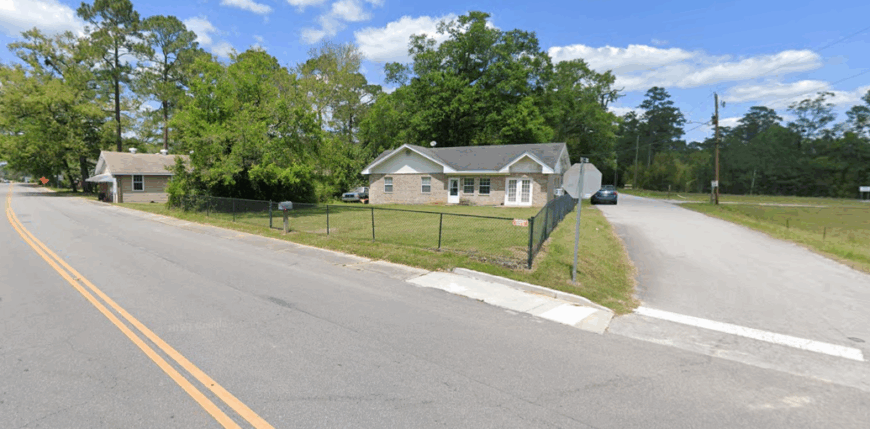
Hidden among the pine flats and sandy backroads of Hampton County, McPhersonville is a place where history and wilderness intertwine so subtly it almost feels like a mirage. Far from major highways and surrounded by forest, fields, and old family lands, the town keeps a low, almost whispered profile in the Lowcountry landscape.
A handful of historic homes and church ruins recall its origins as a wealthy planter retreat before the Civil War shifted its fortunes. Today, visitors come for birding and wildlife in nearby ACE Basin preserves, quiet drives beneath moss-draped oaks, or to trace the remnants of antebellum life still visible in scattered ruins.
Farming, forestry, and heritage tourism sustain its sparse population. It’s the kind of place where silence carries stories and the past feels just a breath away.
Where is McPhersonville?
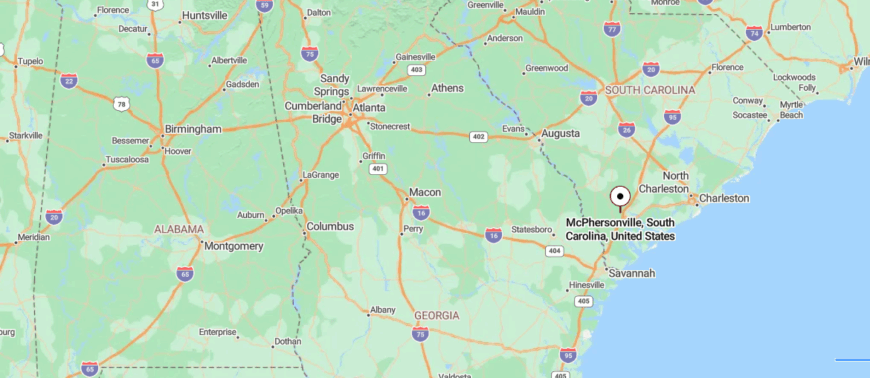
McPhersonville sits in eastern Hampton County, South Carolina, along a quiet backroad between Yemassee and Early Branch in the piney Lowcountry. Once a summer retreat for rice planters, it now holds only a few scattered reminders of its past.
Travelers reach it by winding through shaded secondary roads until the white-columned Stoney Creek Chapel appears among the trees. When you arrive, the stillness and historic air make it feel like a gentle echo of another era.
15. Miley: A Blink-and-You-Miss-It Hideaway
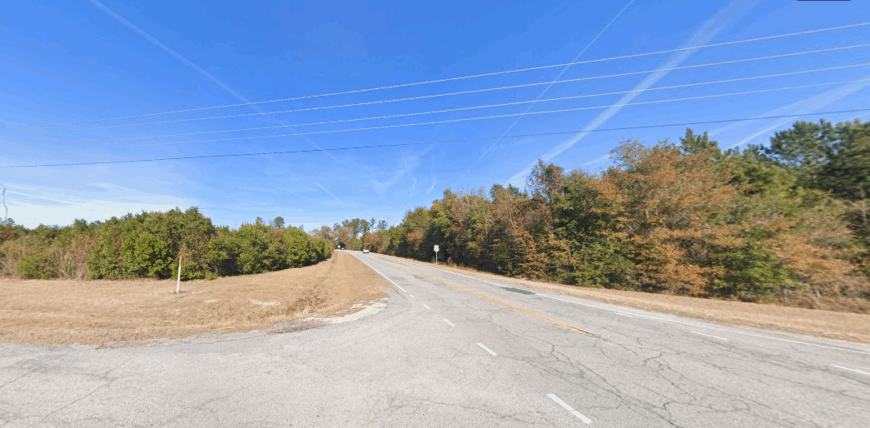
Tucked deep in Hampton County’s farm country, Miley is little more than a crossroads surrounded by fields, forests, and dirt roads that seem to slip off toward nowhere in particular. Its distance from major towns and lack of commercial bustle give it a hushed, almost forgotten feel, where change comes slowly — if at all.
A handful of old homes, a church, and traces of former rail life stand as quiet reminders of a busier past. Travelers occasionally pass through on hunting trips, scenic drives, or while exploring nearby ACE Basin wildlife areas.
Farming and timber work continue to anchor the pace and purpose of everyday life. It’s the kind of place where the quiet isn’t empty — it’s intentional.
Where is Miley?
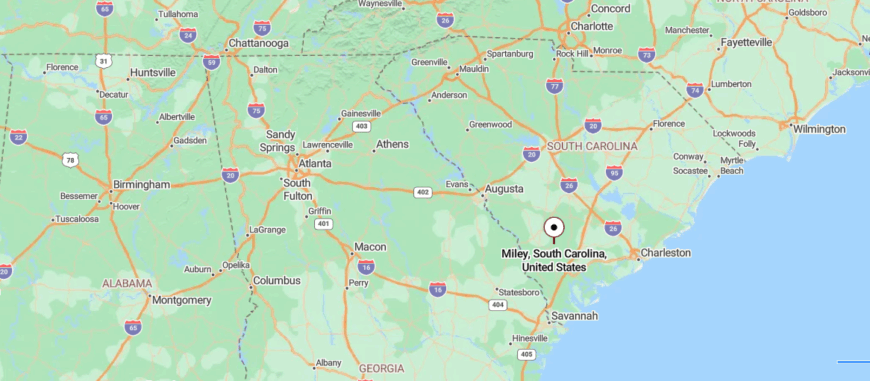
Miley is a small crossroads community in Hampton County, South Carolina, where Salkehatchie Road meets an old branch of the railroad. It sits about 7 miles northeast of Hampton, surrounded by quiet farmland and scattered homes.
Reaching it means following rural backroads until faded tracks and a shuttered post office come into view. By the time you arrive, the stillness and worn rails make it feel like a place history never fully let go.
14. Davis Crossroads: Hidden Among Pines
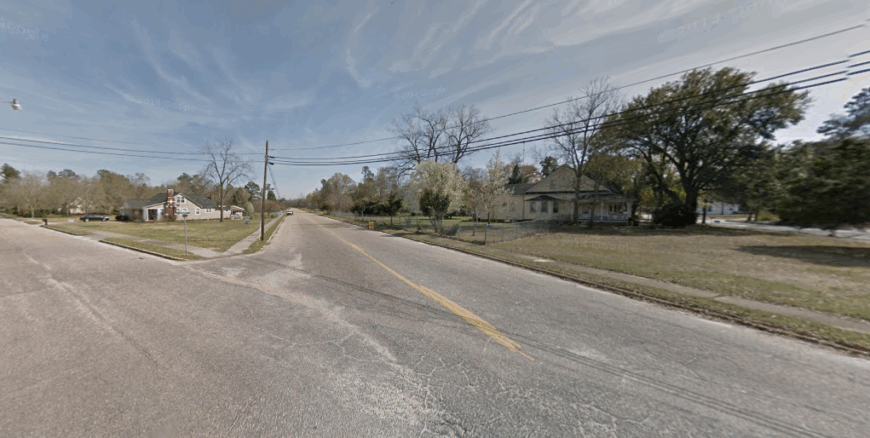
Set at a lonely rural intersection in Hampton County, Davis Crossroads feels more like a pause in the road than a destination at the end of it. Surrounded by sprawling farm fields and piney woods, it remains buffered from modern noise, tucked far from highways and population centers.
Just a few homes, aging barns, and a church mark its presence — all hinting at a time when country stores and rail lines brought more traffic through these dirt-lined lanes. Today, the trickle of visitors comes mostly for hunting leases, quiet drives, or to explore nearby lowcountry wetlands teeming with wildlife.
Forestry and farming keep life grounded, passing traditions along from one generation to the next. It’s the kind of place where stillness feels natural, as though the landscape itself asked for it.
Where is Davis Crossroads?
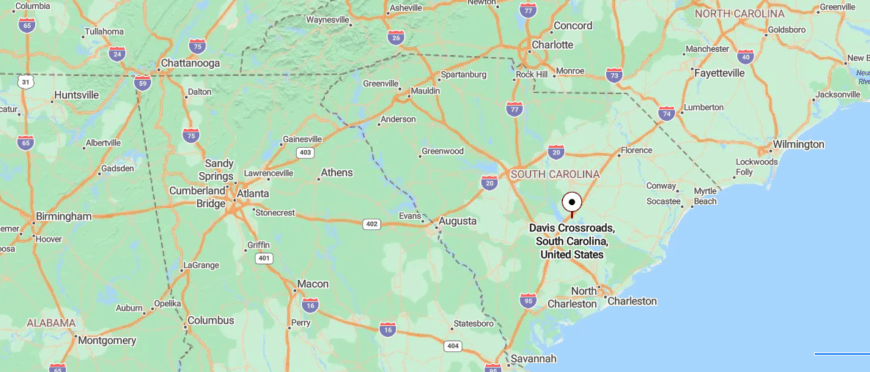
Davis Crossroads is an unincorporated rural community in Hampton County, South Carolina, about 12 miles northeast of Hampton and a short drive south of Miley. It sits at the junction of small farm roads that thread through pinewoods and open fields.
Getting there means following narrow, shaded lanes where the forest parts only briefly to reveal the crossroads and a scattering of homes. When you arrive, the quiet and simplicity of the landscape make it feel like a place gently preserved on its own terms.
13. Grahamville: Wind-Whispered Homesteads
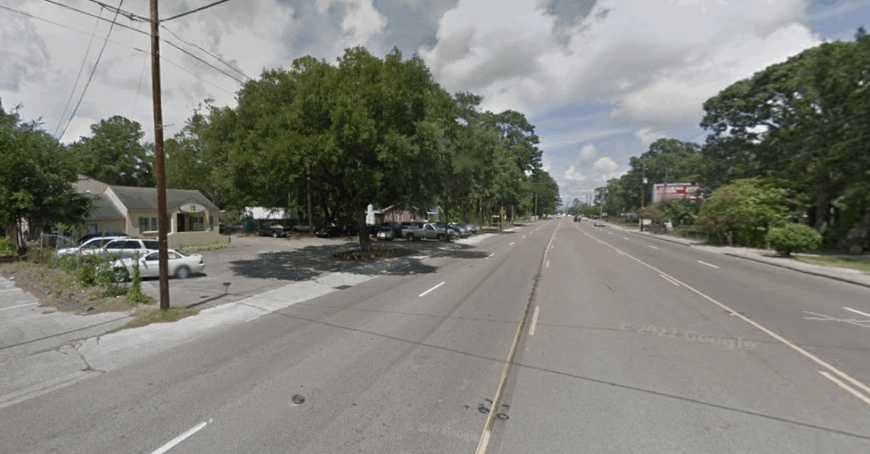
Just off the old King’s Highway in Jasper County, Grahamville rests beneath towering pines and moss-draped oaks that make the modern world feel far away. Its seclusion comes from both geography and time — tucked between marshland, sandy roads, and remnants of early colonial settlement.
A handful of historic homes, a tiny church, and weathered headstones trace the town’s past as a planter retreat and early coastal crossroads. Visitors drift in to birdwatch along nearby ACE Basin roads, explore ruins of rice fields, or admire the quiet beauty of antebellum architecture hidden among the trees.
Farming, forestry, and heritage tourism keep local life anchored to the land. It’s the kind of place where history lingers in every shadow, waiting for those who choose to look.
Where is Grahamville?
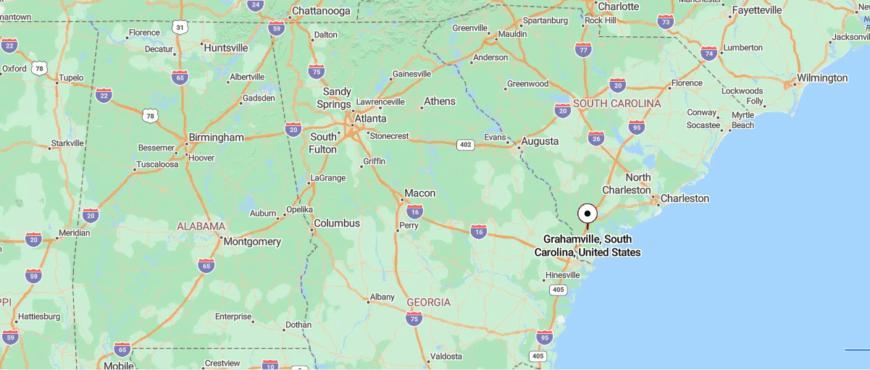
Grahamville lies in Jasper County, South Carolina, tucked just north of Ridgeland in the quiet pinewoods of the Lowcountry. It sits a few miles west of the Broad River, far from bustling highways yet close to old plantation lands and tidal creeks.
Travelers reach it by winding along backroads off U.S. 278, where the trees arch overhead and the traffic thins to almost nothing. By the time you arrive, the stillness and scattered historic homes make it feel like a quiet remnant of a slower, older South.
12. Pineland: Quiet Junction
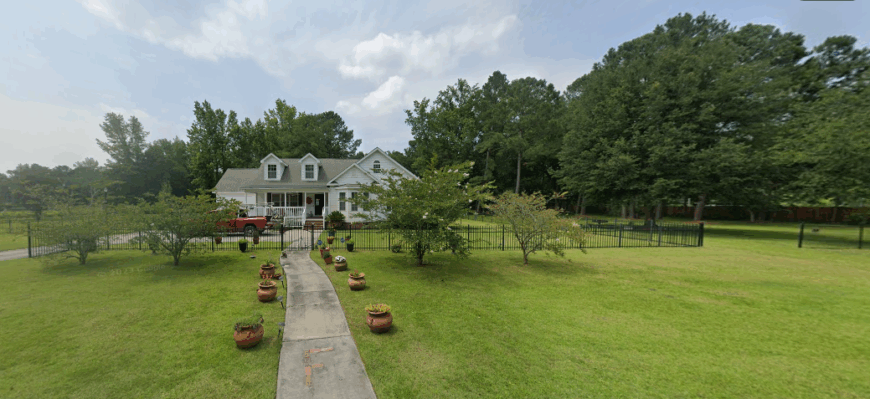
Surrounded by pine forests, sandy soil, and stretches of open farmland, Pineland sits quietly along Route 462 as if tucked between chapters of South Carolina’s Lowcountry history. Its distance from cities and its sparse cluster of homes, churches, and aging storefronts give it a hushed, almost timeless feel.
Remnants of its railroad past and ties to old rice and cotton plantations linger in the edges of fields and the tilt of historic structures. Visitors drift through to explore nearby ACE Basin backroads, spot wildlife in surrounding wetlands, or trace routes once traveled by early coastal settlers.
Heritage tourism and farming, and forestry continue to sustain its deep-rooted community. It’s the kind of place where the scent of pine and the weight of history hang gently in the air.
Where is Pineland?
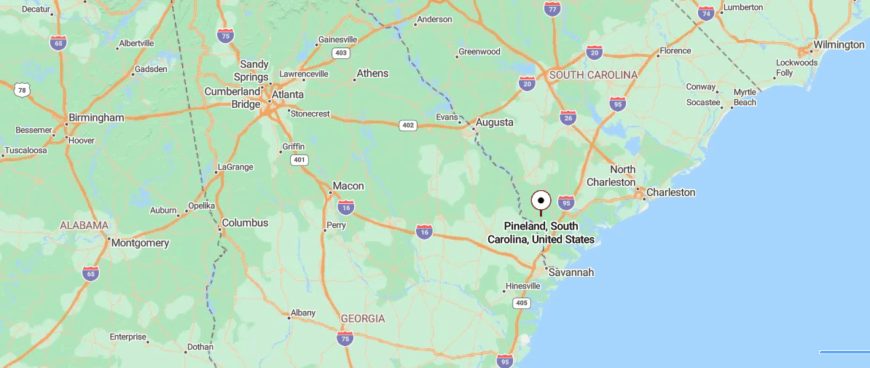
Pineland sits in northern Jasper County, South Carolina, tucked in the Lowcountry just a few miles west of Ridgeland. It lies along US-278, surrounded by flat stretches of pine forest and sandy farmland far from urban noise.
Travelers reach it by following quiet two-lane roads that slip past timber tracts and old farmsteads. When you arrive, the silence and sparse crossroads make it feel like a place gently resting between past and present.
11. Gifford: Slow Living Between Fields and Forest
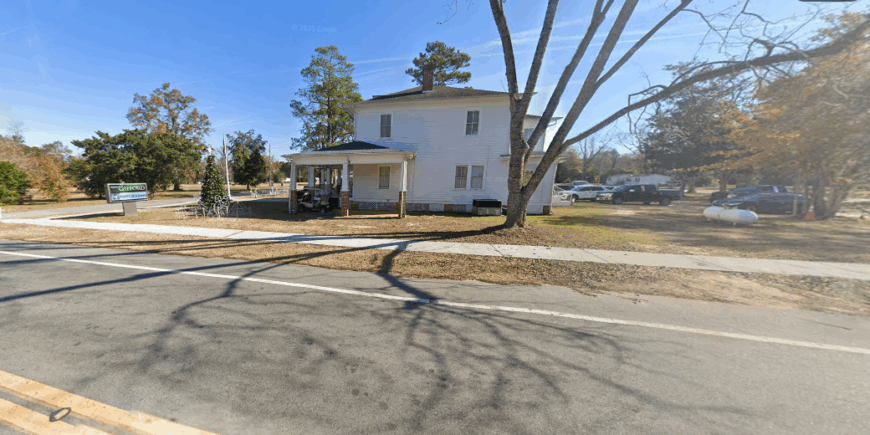
Deep in Hampton County’s agricultural heartland, Gifford rests along a quiet stretch of Highway 321 where fields, forests, and family land stretch far beyond what the eye can see. Its separation from bustling towns gives it a slow, rural rhythm where nothing feels rushed and little seems to change.
A small grid of homes, churches, and old storefronts hints at a past tied closely to local rail lines and farm trade. Travelers occasionally come through to hunt nearby woodlands, visit family cemeteries, or venture toward the fishing waters of the Savannah River.
Today, most livelihoods remain rooted in farming, timber, and local services passed down across generations. It’s the kind of place where everyday quiet holds its own kind of history.
Where is Gifford?
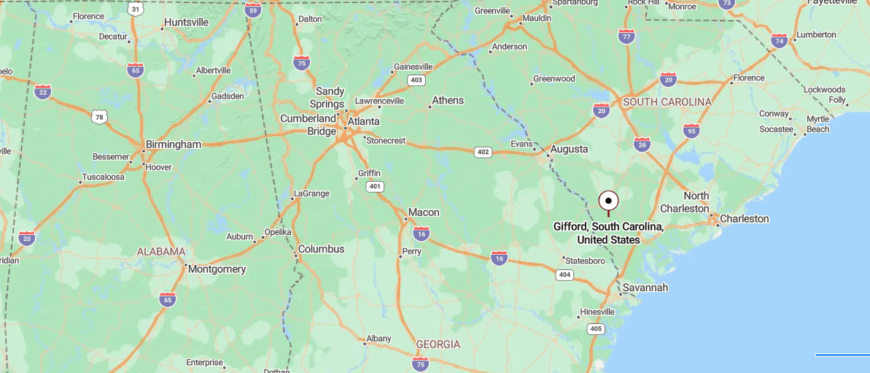
Gifford is a small town in Hampton County, South Carolina, sitting along US-321 amid pine woods and farmland. It’s about 9 miles west of Hampton and just south of Luray, far from any city noise.
Travelers reach it by driving a quiet stretch of two-lane highway until the crossroads and modest homes appear. By the time you arrive, the old Rosenwald School and shaded streets give it a feeling of history that lingers peacefully in the air.
10. Garnett: Escape to Rural Tranquility
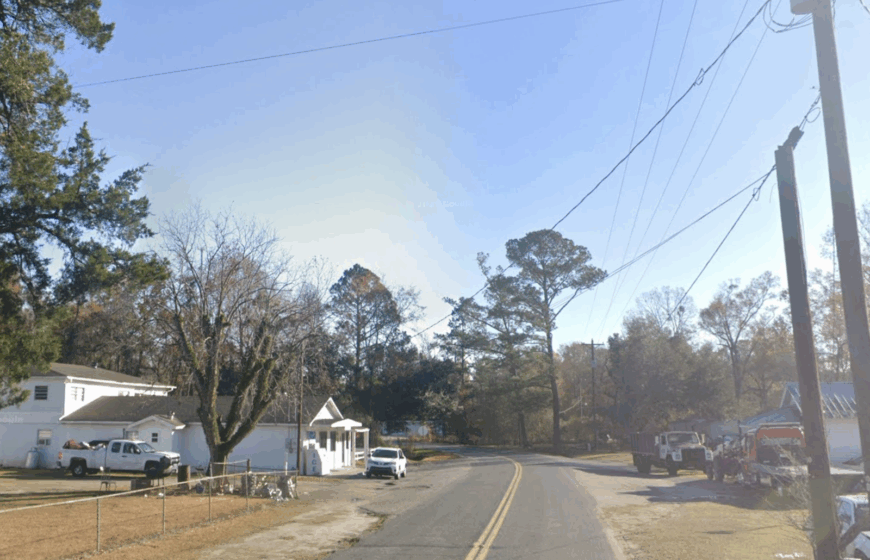
Garnett is a tiny unincorporated community with a population of just a few hundred, making it one of the most peaceful spots I’ve discovered.
Life here moves at a slow pace, with vast farmlands and untouched natural landscapes defining the area. There aren’t any bustling industries, but the local economy thrives on small-scale farming and forestry.
What makes Garnett truly secluded is its distance from major highways and cities, offering a quiet haven for those looking to unplug and relax. The lack of urban development means you can enjoy night skies filled with stars and the sounds of nature uninterrupted.
Where is Garnett?

Garnett is tucked away in Hampton County in the heart of the Lowcountry region of South Carolina. Its seclusion comes from its remote location amidst rural roads and dense woodlands, far from the tourist trails.
Getting there involves a scenic drive through country roads off U.S. Route 321, reinforcing the feeling of stepping back in time. For me, the journey to Garnett is part of its charm, providing a true escape to rural tranquility.
9. Lodge: Secluded Living Amidst Woodlands

With a population hovering around 100, Lodge is a small town that embodies peace and quiet. Surrounded by dense woodlands and located away from bustling urban centers, it’s a haven for anyone seeking solitude. The main industries here are small-scale agriculture and timber, contributing to the town’s rustic atmosphere.
I love that you can spend your days exploring nature trails, bird watching, or simply enjoying the serenity of the forested environment. Lodge’s seclusion is due to its minimal development and the expansive trees that envelop the town, making it feel like a world apart.
Where is Lodge?
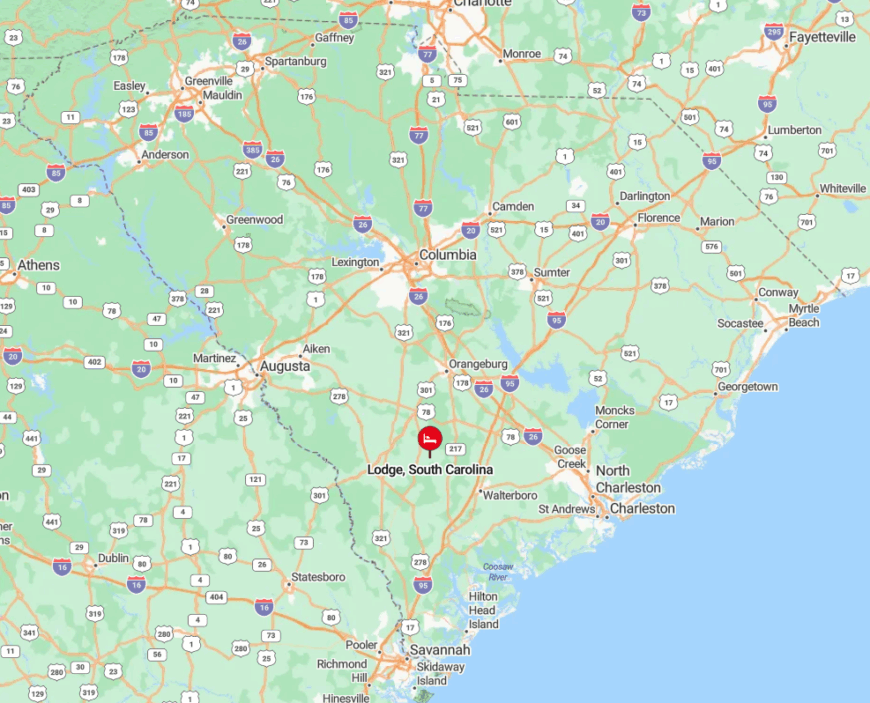
Situated in Colleton County, Lodge lies in the southern part of South Carolina. Its remote location is accentuated by its distance from major highways, nestled along secondary roads like South Carolina Highway 217.
The town’s isolation is one of its defining characteristics, as it’s surrounded by miles of woodlands and farmland. To get there, I take scenic backroads that wind through the picturesque Lowcountry, which only adds to the sense of escape that Lodge offers.
8. Ulmer: The Tiny Town Off The Beaten Path

Ulmer is one of those blink-and-you-miss-it towns, with a population of just over 80 residents. Despite its size, it offers a tight-knit community and a peaceful atmosphere that’s hard to find elsewhere. There aren’t many attractions, but that’s precisely why I find it so charming—it’s a place where you can truly disconnect.
The economy is primarily based on agriculture, with locals engaged in farming and related activities. Ulmer’s seclusion stems from its diminutive size and location away from main thoroughfares, making it ideal for those seeking solitude.
Where is Ulmer?

Located in Allendale County, Ulmer sits quietly along U.S. Route 301, but you’d hardly notice it unless you were specifically looking. Its remote location contributes to its untouched feel, with vast fields and open skies surrounding the area.
Getting there involves traveling through rural landscapes that highlight the natural beauty of Southern South Carolina. I find that the journey itself, away from crowded highways, sets the tone for the tranquil experience Ulmer provides.
7. Islandton: Nature’s Quiet Hideaway
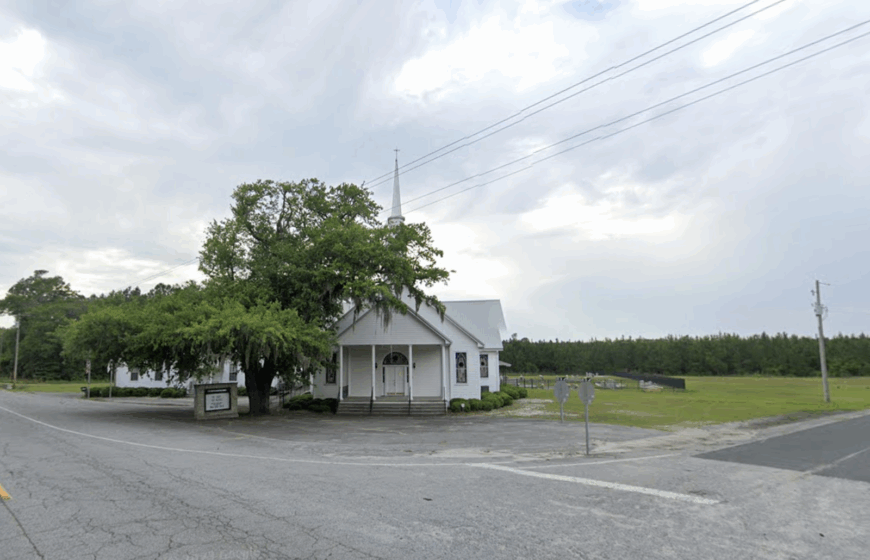
Islandton is an unincorporated community that feels like a secret tucked away among nature. With a sparse population, it’s an ideal spot for those who cherish privacy and a deep connection to the outdoors.
The area is rich in natural beauty, including nearby rivers and forests that offer opportunities for fishing, hiking, and wildlife observation.
There aren’t any significant industries here, which adds to the untouched ambiance I love so much about Islandton. Its seclusion is amplified by the abundant greenery that surrounds it, enveloping visitors in a serene natural setting.
Where is Islandton?
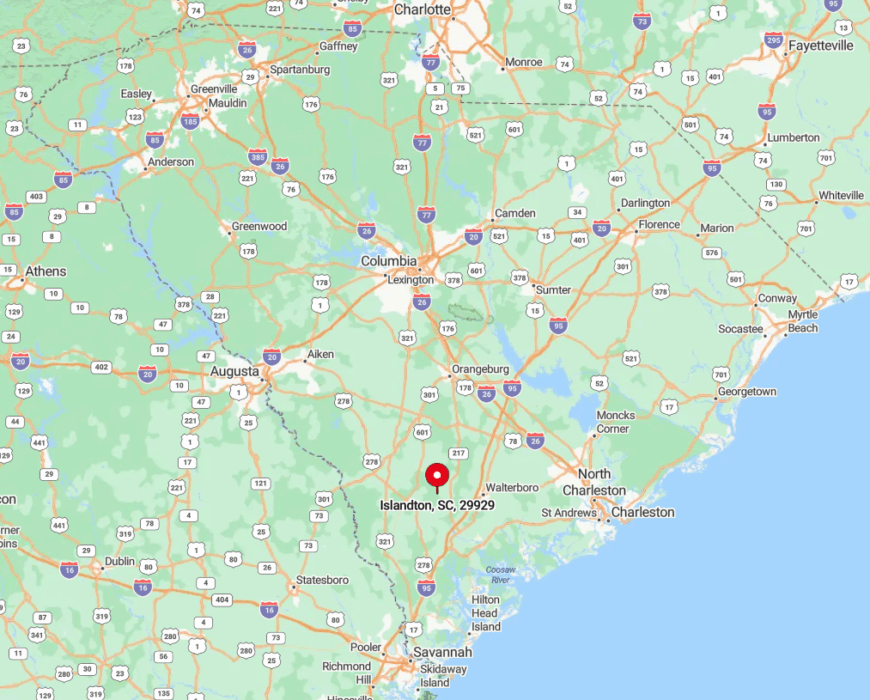
Nestled in Colleton County, Islandton is located off the beaten path, accessible via smaller roads like South Carolina Highway 63. Its remote position away from urban centers contributes to its quiet atmosphere.
The town is surrounded by the ACE Basin, one of the largest undeveloped estuaries on the East Coast, which enhances its secluded feel. I’ve found that reaching Islandton requires a deliberate effort, furthering the sense of retreat it offers.
6. Furman: Embracing Simplicity Amidst Farmlands
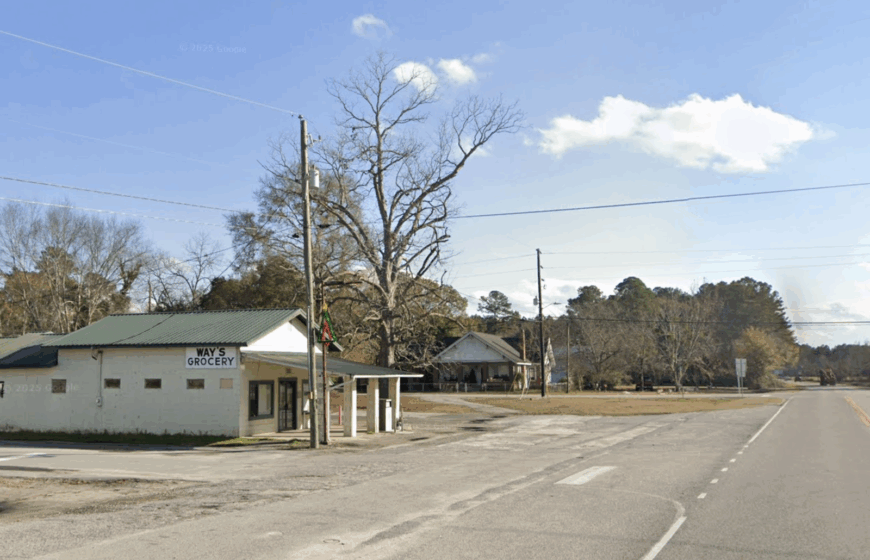
Furman is a small town with a population of around 200 people, where life is simple and unhurried. Surrounded by vast farmlands, it’s a place where agriculture is more than an industry—it’s a way of life. Residents engage in farming and other agricultural activities, fostering a close community spirit.
I appreciate Furman for its lack of commercial development, which makes it an ideal spot for those wanting to escape the complexities of modern life. Its seclusion is evident in its expansive rural surroundings and the miles of fields that separate it from larger towns.
Where is Furman?

Located in Hampton County, Furman is off the main highways, accessible via state roads like South Carolina Highway 363. Its remote setting amid the Lowcountry’s agricultural heartland contributes to its peaceful ambiance.
The town is quite a distance from major cities, underscoring its secluded nature. Whenever I visit, I enjoy the quiet drive through the countryside, which sets the stage for Furman’s tranquil environment.
5. Scotia: Historical Seclusion in the Lowcountry
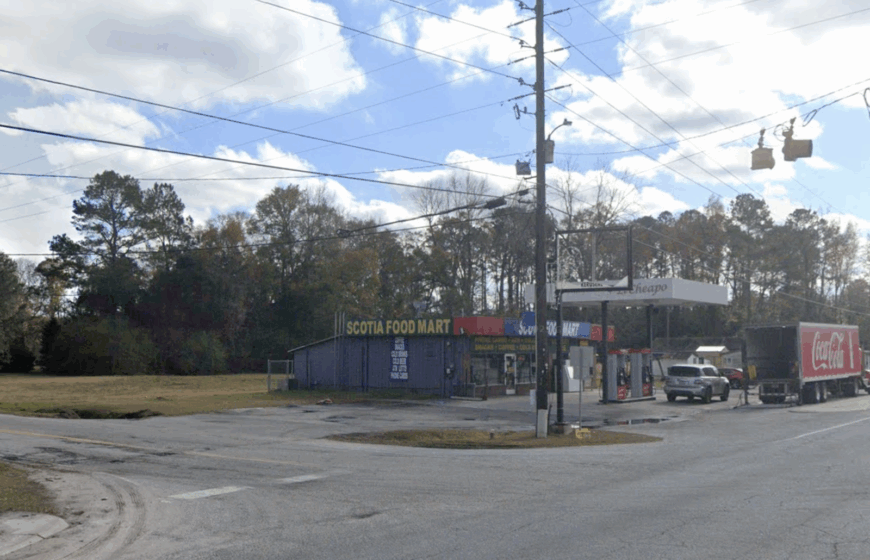
Scotia is a quaint town with a rich history and a population of about 200 residents. Its historical buildings and quiet streets offer a glimpse into a bygone era. The main industries include small-scale farming and local businesses that serve the community.
For me, the charm of Scotia lies in its peaceful streets lined with historic homes and the absence of modern commercial intrusion. Its seclusion is a result of both its small size and its location away from major transportation routes, making it a peaceful enclave for history enthusiasts and those seeking a slower pace.
Where is Scotia?
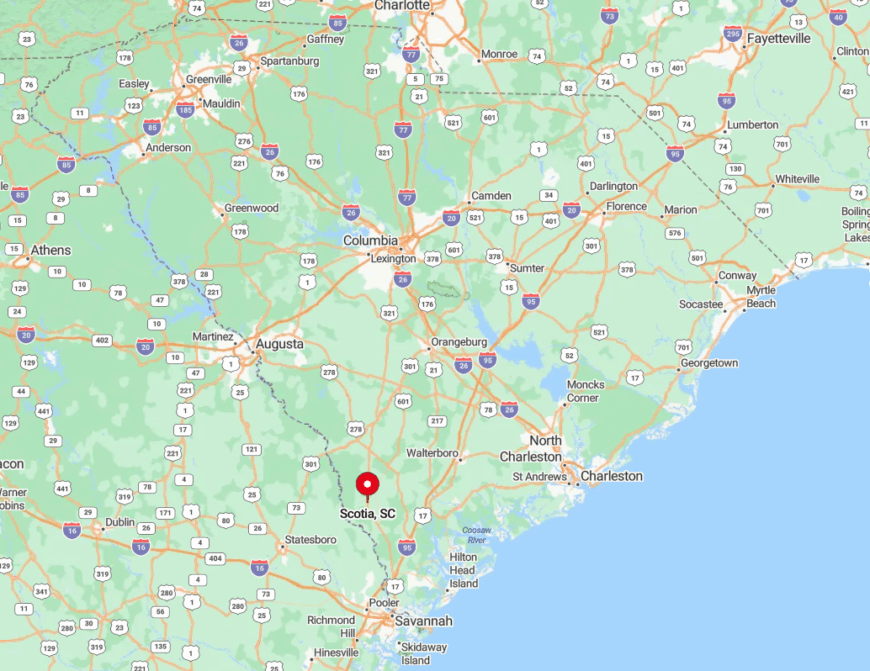
Scotia is situated in Hampton County, nestled in the Lowcountry region of South Carolina. It’s located along U.S. Route 321 but remains relatively untouched by heavy traffic or development.
The town’s remoteness is enhanced by the surrounding rural landscapes and the distance from urban hubs. Getting there involves a leisurely drive through scenic countryside, which I find adds to Scotia’s appeal as a secluded destination.
4. Grays: Where Time Slows Down

Grays is an unincorporated community that offers a serene atmosphere with a very small population. It’s a place where time seems to slow down, providing a respite from the fast-paced modern world. The area is characterized by spacious lands, minimal traffic, and the sounds of nature.
There aren’t any major industries, which contributes to the quiet environment I so enjoy. Grays’ seclusion comes from its sparse development and location amid expansive rural areas, making it perfect for those seeking a slower pace of life.
Where is Grays?

Located in Jasper County, Grays is off the main roads, accessible via small state highways like South Carolina Highway 3. Its position away from major cities and thoroughfares enhances its secluded feel.
The community is surrounded by farmland and forests, adding to its sense of isolation. Whenever I visit Grays, the journey through the countryside is a delight in itself, reinforcing the tranquility that awaits.
3. Bluffton: Tidal Quiet and Shaded Streets
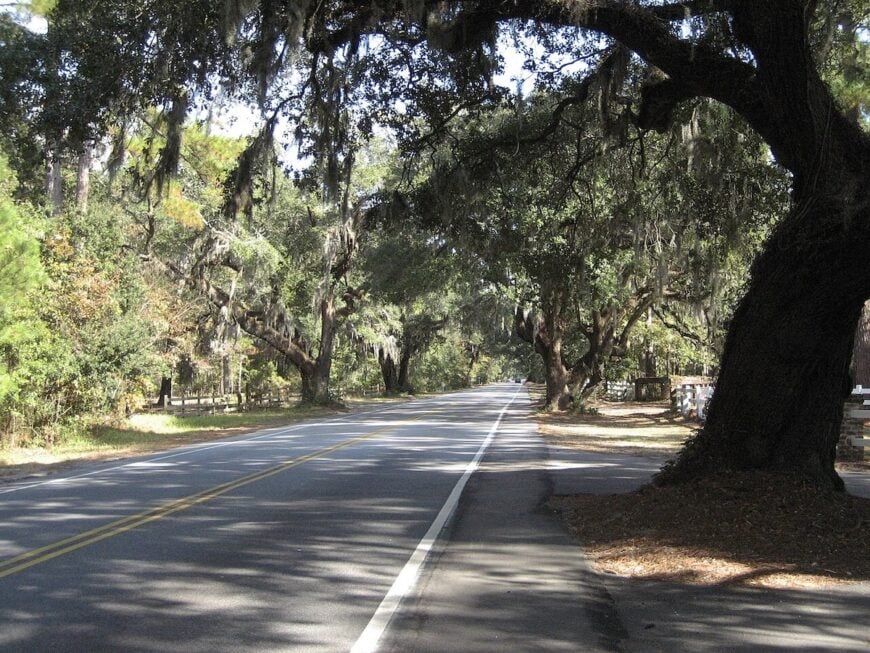
Tucked along the May River in Beaufort County, Bluffton balances its old Lowcountry charm with the hush of shaded lanes where Spanish moss drapes everything in a curtain of green. Once a summer retreat for planters, its historic district still leans toward quiet porches and river breezes that slow the pace to something unhurried.
The town’s heart holds weathered churches, pre–Civil War homes, and an old oyster industry that shaped its rhythm. Visitors wander narrow streets, paddle the May’s blackwater inlets, or linger at the farmers’ market where the day feels folded back a century.
Bluffton’s economy blends fishing, small-scale farming, and a strong thread of art galleries that tie it to the region’s culture. It’s a place where the natural tide and human life move in quiet harmony.
Where is Bluffton?
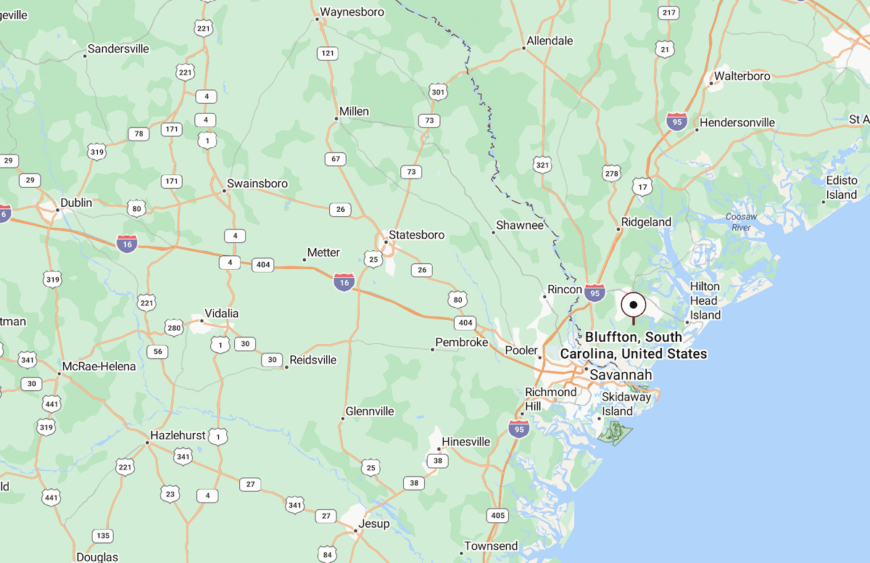
Bluffton sits in southern Beaufort County, South Carolina, resting on the banks of the May River just inland from Hilton Head. Its location along U.S. 278 makes it accessible, yet the river and marshes buffer it from the noise of nearby resort corridors.
Reaching Bluffton means driving through pine flats and salt marsh before arriving at its historic district, where live oaks line narrow streets. By the time you step out, the scent of brackish water and the hush of shaded porches make it feel like a town caught between tide and time.
2. Dale: Serenity Near the ACE Basin
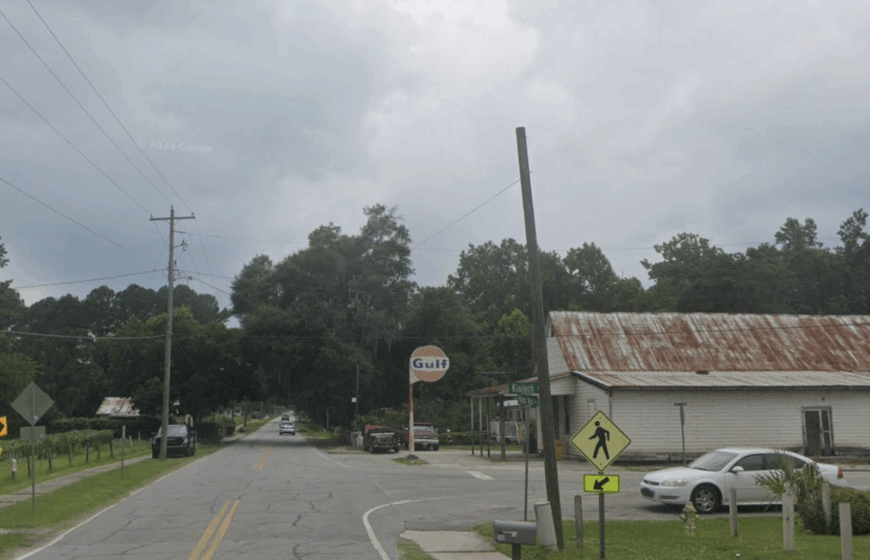
Dale is a small community that offers serenity near the renowned ACE Basin, one of the largest undeveloped estuaries on the East Coast.
With a modest population, it’s a peaceful retreat for nature lovers like me who value privacy. The area provides opportunities for kayaking, bird watching, and exploring the rich biodiversity of the wetlands.
There are few commercial industries, allowing the natural environment to take center stage. Dale’s seclusion is heightened by its sparse development and proximity to protected natural areas, offering a quiet escape into nature.
Where is Dale?
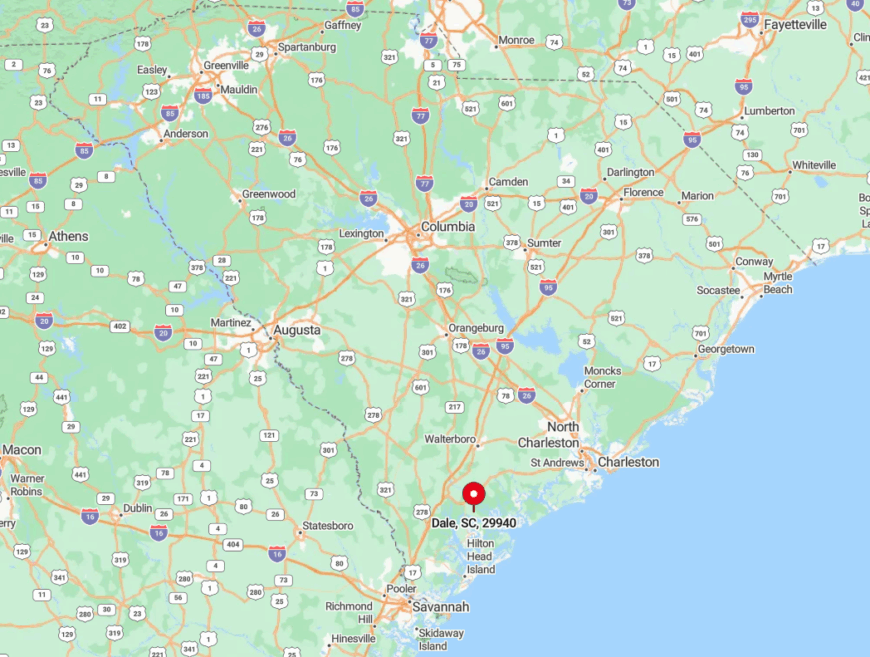
Situated in northern Beaufort County, Dale is accessible via U.S. Route 21 but remains off the beaten path. Its location near the ACE Basin means it’s surrounded by vast wetlands and marshes, enhancing its secluded feel.
The community is quite a distance from urban centers, making it a perfect getaway for those seeking solitude. I enjoy the drive through marshlands and over quiet creeks to reach Dale, as it sets the tone for the peaceful experience that awaits.
1. Sheldon: The Lowcountry’s Best-Kept Secret

Sheldon is an unincorporated community enveloped by lush forests and expansive wetlands, with a population that’s comfortably sparse.
It’s the kind of place where you can immerse yourself in nature, from walking through wooded trails to fishing in pristine waters. There aren’t significant industries, which helps preserve its tranquil ambiance.
What makes Sheldon truly secluded is its untouched landscapes and minimal development, offering an ideal retreat for those seeking tranquility. I consider it the Lowcountry’s best-kept secret because of its serene environment and the sense of peace it provides.
Where is Sheldon?
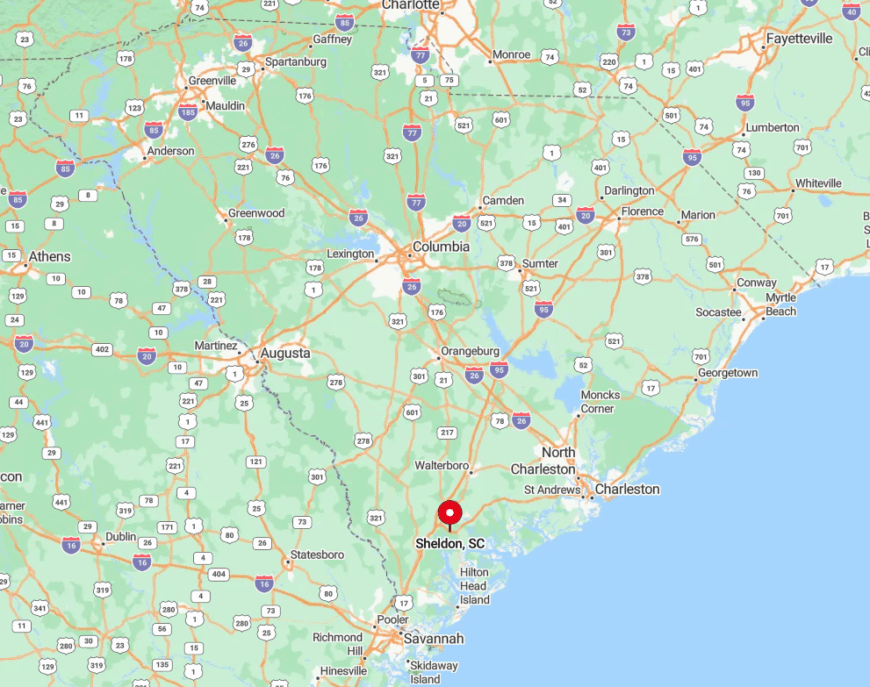
Located in northern Beaufort County, Sheldon is nestled between the Broad and Coosaw Rivers. Its remote position is enhanced by the surrounding forests and wetlands of the Lowcountry. Access is primarily via U.S. Highway 17, but the town remains well-hidden among the natural scenery.
Getting to Sheldon involves a journey through picturesque landscapes that, for me, make the destination even more rewarding. Its seclusion and natural beauty make it my top pick for a peaceful escape in Southern South Carolina.

